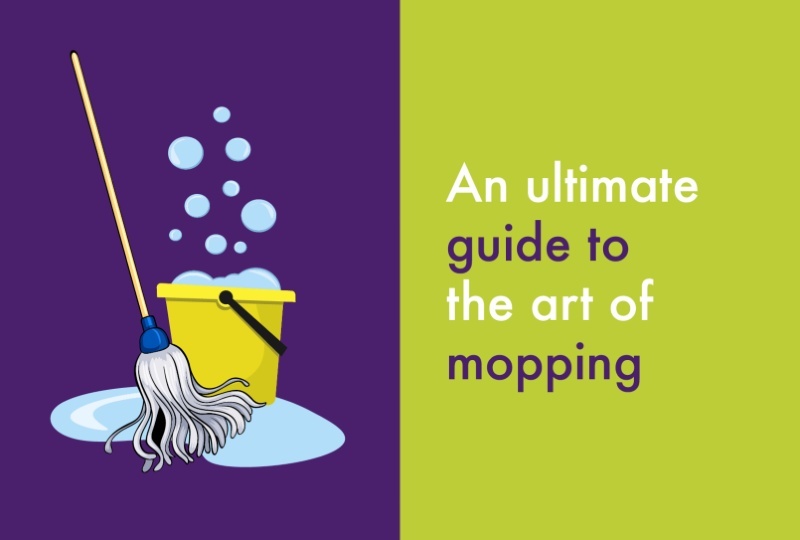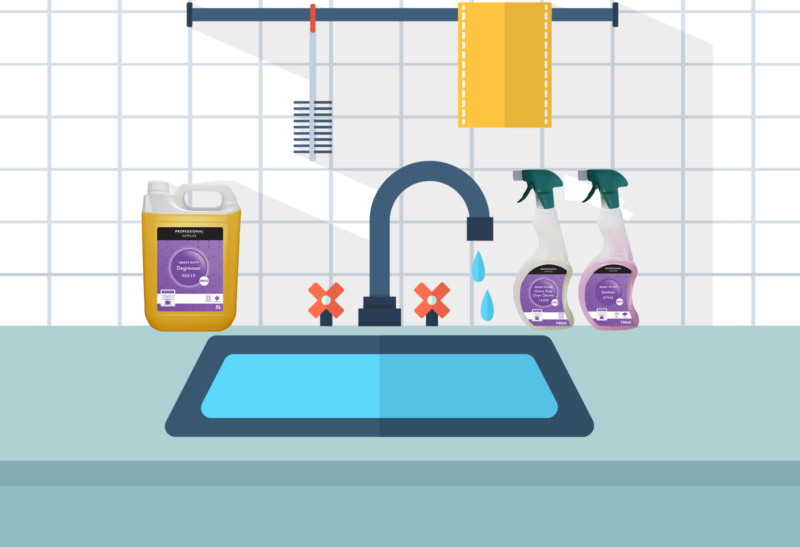Keeping it clean!
Mops are endlessly useful however, did you know, improper handling, cleaning, and delayed replacement of mop heads make them not only inefficient, but major contributors to the spread of potentially harmful bacteria?
Here’s a fact that will surely leave you wanting to know how often mops should be replaced:
- Mop heads can contain more than 2000 bacteria per square inch*
To put that into context, your average toilet seat contains just 50 bacteria per square inch and your average desktop can contain up to 400 times more bacteria than your toilet seat.*
That’s hundreds of billions of harmful bacteria that are going straight onto your floors, ripe for spreading and multiplying.
That’s why, aside from knowing how to properly use them and clean them, it is just as important to spot the signs of a tired and worn mop head.
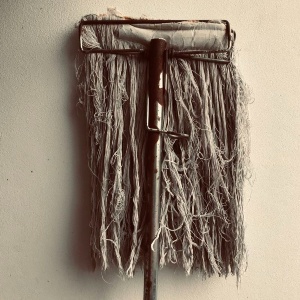
So… How often should you replace your mop head?
There is no fixed rule to the lifespan of a mop head, it depends on the environment you are mopping and the area size and strength of detergent. A more fool proof way of knowing when to replace the mops is spotting signs of wear.
Generally, your mop heads must be replaced when:
- Parts of the mop head are falling off – watch out for those little bits of the mop head that come off when cleaning floors or laundering your mop heads.
- When the parts are discoloured – sometimes signs of discoloration or staining on the mop are due to improper cleaning, but more often than not, it means that the mop heads have reached their expiration point.
- When the fibres are worn or disfigured – this is especially true for microfibre wet and dust mop heads. When the fibres look like old toothbrush bristles, or bald spots start to appear, it is a clear indicator that the mops have been worn out and their efficacy is maxed out.
So… How do I look after my mop heads?
Like almost anything, mop heads need to be properly cleaned and maintained to preserve their life.
Follow these simple tips to help you maintain your mop heads:
- Wash with clean water after every use.
- Wring out after washing.
- Air dry between uses.
- Always store in a dry place.
- Store with the head facing down if using a wall rack.
- If no wall rack is available, store with the mop head facing up, as opposed to being left on the floor.
- NEVER leave your mop head in dirty water overnight.
- Above all ….. Always have replacement stocks of a clean mop head available!
Understanding the different mop heads
Non-woven Mop Heads: These semi-disposable mops are made from non-woven, highly absorbent fibre and feature a cut end with interchange screw fitting. These mop heads are available in a variety of colours, making them perfect for colour-coded cleaning and infection control. Not designed for multiple washing and re-use.
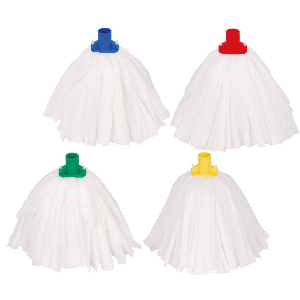
(Blue 35432, Green 35431, Red 35433, Yellow 35461)
Socket Mops: These types of mops are by far the most used within the cleaning industry and are suitable for a variety of tasks. The plastic sockets screw to a plastic-coated metal handle, which usually incorporates a rubber grip at the top. Not only does this make them more comfortable when wringing, but the plastic fittings also make attaching and detaching mop heads much easier.
The use of coloured plastic varieties as part of a colour-coded cleaning system is becoming increasingly popular as a way to help prevent the spread of bacteria.
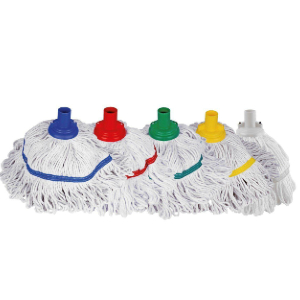
(Blue 29723, Green 29724, Red 29725, Yellow 29727)
Kentucky Mops: This style of mop has a much longer yarn and is stitched in the middle using a polyester band to secure the fibres and maintain shape. The polyester band can also have an abrasive texture to enable the removal of stubborn stains and ingrained dirt on surfaces. Unlike socket mop heads, the handle screws into a plastic, colour coded clip which in turn secures the mop head in place.
Kentucky Mops are particularly effective for cleaning large areas of flooring and can also be used for laying floor polish. However, they can only be used in conjunction with the appropriate Kentucky bucket and wringer.
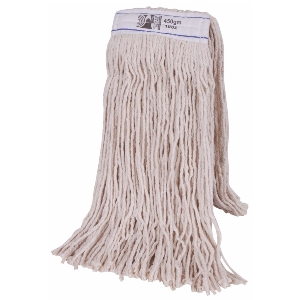
(450g / 16oz mop head 49453, 350g / 12oz mop head 79413)
Flat Mops: These mop heads are ideal for quick and efficient cleaning. Made from absorbent microfiber material, the mop head collects huge amounts of dirt, dust, moisture and bacteria from floors and kitchen surfaces. The microfibre also requires less water and chemicals when cleaning, improving cleaning efficiencies and reducing environmental impact.
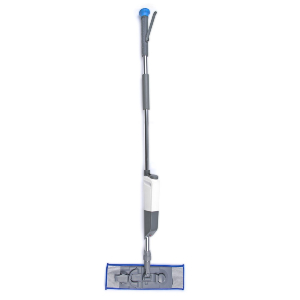
(Handle & reservoir 81023, flat head 81024)
Whatever your mopping style, REMEMBER, starting with a dirty mop head ends with a dirty floor finish. Attach a new mop head today to ensure a clean floor for tomorrow!
To learn more about mops and to explore the full range, check out our Helping you with… mops and brooms guide here.
